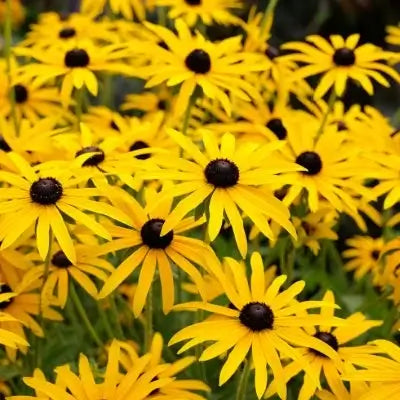10 Tips for Successfully Growing Fresh Herbs Indoors
Introduction: Growing fresh herbs indoors can be rewarding and practical, allowing you to enjoy a steady supply of flavorful and aromatic herbs year-round. Whether you have limited outdoor space or want easy access to herbs in your kitchen, indoor herb gardening offers numerous benefits.
This article will explore ten tips to help you cultivate a thriving indoor herb garden. Choose the Right Herbs: The right herbs are crucial for a successful indoor garden. Opt for herbs well-suited to indoor conditions, such as basil, mint, parsley, cilantro, chives, and thyme.
These herbs generally adapt well to lower light levels and confined spaces. Find the Ideal
Location: Place your herb garden near a window that receives adequate sunlight. Herbs typically require around 6 hours of daylight daily, so south or west-facing windows are ideal.
Provide Proper Drainage: Ensure your herb pots have proper drainage holes to prevent overwatering. Use pots with saucers or trays to catch excess water, preventing root rot. Well-draining potting soil is also essential to maintain healthy root systems.
Choose the Right Containers: Select appropriate containers for the size of the herb and the available space. While many herbs can thrive in smaller pots, others, like basil, might need slightly larger containers.
Water Wisely: Overwatering is a common mistake in indoor herb gardening. Herbs prefer slightly dry conditions between watering. Water your herbs when the top inch of soil feels dry. Be sure to keep the plants from sitting in standing water.
Fertilize Mindfully: Indoor herbs benefit from occasional fertilization. Use a balanced, water-soluble fertilizer diluted to half-strength every 4-6 weeks. Avoid over-fertilizing.
Prune Regularly: Pruning is essential for maintaining the health and productivity of your indoor herbs. Harvesting leaves also promotes new growth and ensures you have a fresh supply for culinary use. Manage Humidity: Indoor environments can sometimes become dry. To maintain proper humidity levels for your herbs, consider using a humidity tray filled with water and pebbles. Misting the plants can also help.
Keep an Eye on Pests: Indoor herbs such as aphids, mealybugs, and spider mites can still fall victim to pests. Regularly inspect your plants[if you spot any, take action promptly. You can use remedies like neem oil or insecticidal soap to control infestations.
Rotate for Balanced Growth: Rotate your herb pots every few weeks to even exposure to sunlight. It prevents one side of the plant from growing toward the light source and becoming uneven or leggy. Conclusion: Growing fresh herbs indoors is a delightful way to enhance your culinary experiences while adding a touch of greenery to your living space.
Following these ten essential tips, you can create a thriving indoor herb garden with a continuous supply of aromatic and flavorful herbs throughout the year
Remember that each herb has unique requirements, so observing and responding to your plants' needs will contribute to your success as an indoor herb gardener.
Whether you're a seasoned gardener or a beginner, the joy of nurturing herbs, from seedlings to lush plants, is an immensely satisfying journey. Herbs have been cherished for centuries, revered for their culinary, medicinal, and aromatic properties. In the context of an indoor garden, their importance takes on new dimensions.
These plants possess qualities that make them particularly well-suited for indoor cultivation, and their incorporation into indoor gardens can turn a simple windowsill into a culinary haven and a sanctuary for relaxation.
Culinary Delights: The flavors and aromas that herbs infuse into dishes are unparalleled.
Basil enlivens pasta and salads with its vibrant green leaves and distinctive aroma.
Rosemary's woody fragrance and earthy taste elevate roasted vegetables and meats. Indoor gardens grant us access to these fresh flavors year-round, irrespective of weather conditions or the limited space of an apartment. The convenience of harvesting herbs before cooking ensures a flavor that dried alternatives can't match.
Aromatic Ambiance: Beyond culinary applications, herbs can transform indoor spaces into sensory retreats.
Lavender, known for its calming properties, infuses rooms with a soothing scent, promoting relaxation and better sleep. With its refreshing aroma,
Mint revitalizes the atmosphere and can even help with focus and concentration. Individuals can create a dynamic, aromatic environment that supports their well-being by cultivating herbs indoors.
Health and Wellness: Herbs have long been recognized for their potential health benefits. Aloe vera, for instance, is a potent natural remedy for skin issues and burns.
Chamomile offers relaxation and aids digestion. Growing these herbs indoors ensures a ready supply of natural remedies, enriching our lives with holistic wellness options.
Air Quality and Oxygen Enrichment: Incorporating herbs like Basil, mint, and thyme into an indoor garden can enhance air purification, making the indoor environment healthier and more refreshing.
Connection to Nature: In bustling urban environments, the opportunity to connect with nature can be limited.
Indoor gardens bridge this gap, offering a chance to nurture and care for living organisms
Herbs, with their diverse growth patterns and responsiveness, create a sense of connection to the natural world. Tending to these plants fosters mindfulness and a renewed appreciation for the beauty of growth.
Design and Aesthetics: Herbs contribute not only to our senses but also to the visual appeal of indoor spaces. Their varying textures, colors, and growth habits can be artistically arranged to create visually striking indoor gardens. Whether suspended in hanging pots, adorning windowsills, or showcased on shelves, herbs add an element of elegance and vibrancy to interior design. In conclusion, the importance of herbs in the context of indoor gardening cannot be overstated.
Selecting the right herbs and providing them with proper care fosters a harmonious environment where plants and people flourish. With a diverse array of herbs at one's fingertips, cultivating a successful indoor garden becomes a journey of discovery, creativity, and enrichment.




























































